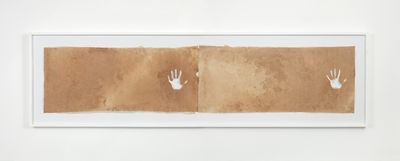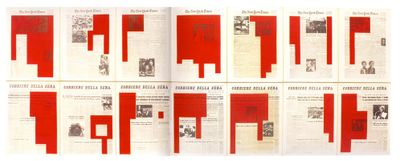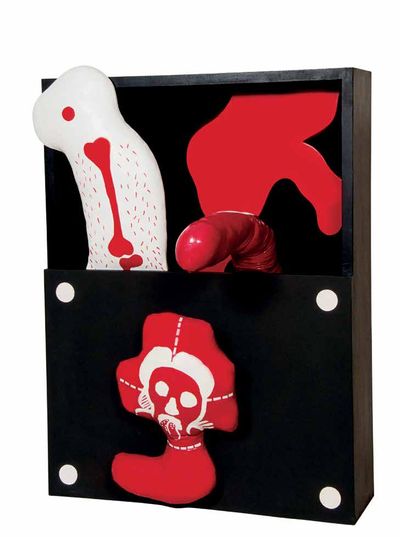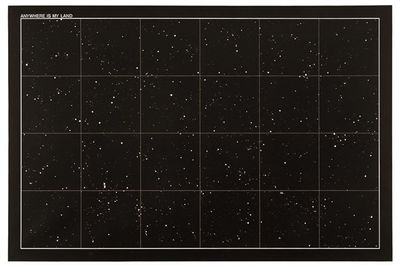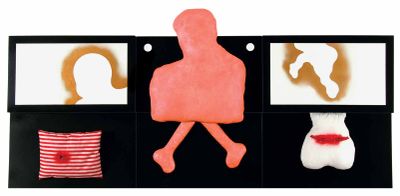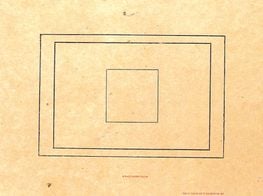Paulo Sérgio Duarte on Antonio Dias
Paulo Sérgio Duarte. Courtesy Paulo Sérgio Duarte.
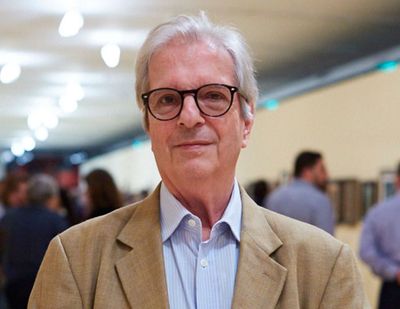
Paulo Sérgio Duarte. Courtesy Paulo Sérgio Duarte.
In 1963, at the age of 19, Antonio Dias emerged as one of the leading artists in Brazil with confrontational paintings like Ahh! (1963), in which red and black cartoon figures appear to fuse together as they engage in hair-raising combat. As the military dictatorship took power in 1964, transformations in art and culture exposed Dias to the geometric abstractions of Grupo Frente, along with Hélio Oiticica's vivid structures and visceral environments.
The avantgarde film and music of the period included the absurdist B movies of marginal cinema, and Tropicália counted politically and socially aware performers like Caetano Veloso and Gilberto Gil.
During this time, Dias produced compelling assemblages and objects capturing the social disquiet and political violence in Brazil. Culling influences from Neo-Concretism to bossanova, he produced politically engaged drawings and paintings that were both playful in their materiality and critical in concept. By 1965, Dias was making large-scale pieces like Nota sobre a Morte Imprevista (On Unforeseen Death) (1965): a combination of oil, acrylic, vinyl, plexiglass on wood and fabric, depicting uncanny forms drawing from the graphic qualities of Brazilian Cordel literature, comic strips, and playing cards.
The lines inside the rhombus-shaped surface gingerly illustrate shapes that look like skulls, gas, gas masks, bones and claws tumbling into a striking three-dimensional object oozing out a black mass.
Though Dias resisted affiliation with any specific artistic movement, his works have been connected to Pop Art in the past. In 2015, he agreed to show in The World Goes Pop at Tate Modern, London, and International Pop at Walker Art Center, Minneapolis, since both exhibitions promised to look at the movement from a global perspective, giving attention to particular histories and singular voices.
At Tate Modern, Dias presented Acidente no Jogo (1964); composed of paint and vinyl on wood and padded fabric, a red phallus peeps out of a black-box frame that also contains images of bones and a Che Guevara-looking skull complete with beret. At the Walker Art Center, he showed O Meu Retrato (My Portrait) (1966), a biomorphic piece produced two years after the coup, and composed of facial features, pubic hair, droopy and resigned loins and an overhand knotted heart.
After winning the prize for painting at the Biennale de Paris in 1965, Dias remained in Europe, and after the student protests of 1968, he moved to Milan where he regularly showed with Studio Marconi. Surrounded by the leading figures of Arte Povera, Dias turned to a conceptual practice that remained politically engaged. His enigmatic text-based works draw from advertising jargon, politics, and banal terms and expressions.
Some of his text pieces and objects are self-referential, such as the series, 'The Illustration of Art' (1971–1978), whose title functions as a strategy to comment on economic, political, and social issues, while indicating art's ability to illuminate or passively represent them. Dias also become involved in the avantgarde film scene in Milan, and began working with Super 8. He made several short films, including The Illustration of Art / Economy / Model (1975), which was realised in the context of the Festival of Expanded Media at the Student Cultural Center in Belgrade, Serbia.
In the late 1970s, an interest in Nepali paper led the artist to Kathmandu, where he extended his two-week trip to five months and produced works composed of text and grids on handmade paper, as exemplified in his 'Trama' series (1968/1977), which he created with Tibetan engravers and printers in Barabishe. The resulting works are composed of grids, patterns, and lines with printed phrases stamped onto the pages, such as 'TERROR SQUARE', 'SENSORIAL THEATRE OF FEAR', and 'THE PANTHER (A PANTHER) IS FREE AND DARKNESS IS THE PLACE'. Dias's travels also took him to New York on a Guggenheim fellowship, where he spent time with Oiticica; and in 1973 he went to Cologne to collaborate with Joseph Beuys at The Free International University, but the collaboration never came to fruition.
Dias met art historian and critic Paulo Sérgio Duarte, who wrote about the artist's work after he represented Italy at the 1973 Biennale de Paris, in Milan. Duarte is professor at the School of Visual Arts of Parque Lage and Candido Mendes University in Rio de Janeiro, and was the first general director of Paço Imperial / Iphan, where he worked from 1986 to 1990. In this conversation, Duarte discusses the legacy of Dias's practice, focusing on an exhibition that he curated at Galeria Nara Roesler in São Paulo, Tazibao and other works 1 September–3 November 2018).
The Antonio Dias exhibition that you curated at Galeria Nara Roesler in São Paolo features the artist's 'Tazibao' series. Could you talk about the parallel histories and narratives running through this work?
The title, which Dias chose in 1972, refers to the Cultural Revolution in China. The 'tazibao' were actually wall-mounted posters used at a time when the revisionists were combating communist parties. Dias adopted this title in his series to highlight the Watergate scandal that took place during the Nixon years in the United States. For one week during Nixon's re-election in November 1972, Dias took front-page news stories from The New York Times and Corriere della Sera that covered the Watergate scandal and covered them in red. He then cut out the stories in their exact equivalency on red-painted canvases, and placed them beneath the actual news story.
In addition to the 'Tazibao' series, I chose to include later works that allow the viewer to get a sense of very specific and important moments in Dias's career. The 'Tazibao' are central to this exhibition, that's where it all started. This exhibition marks the first time that they are being shown in Brazil. They were first shown in Italy at Galleria Piero Cavellini in 1976, and then in Taipei at the Taipei Fine Arts Museum in 1985, organised by Martha Su-Fu.
What were the major transformations in Dias's practice, and what were the connecting currents across the different media—painting, sculpture, video installation, and film—that he used?
There was a great shift in Dias's career between 1963—when he was just 19 years old—and 1967. His works from this period are extremely strong both aesthetically and politically: they had a lot to say. The second period, between 1968 and 1976, marks a huge rupture with everything that he had done before. During this time, he incorporated words into his artworks, but in a very different manner to the movements initiated by artists in the United States and England, such as the Art & Language group. He doesn't renounce any aesthetic qualities from his work. It's very conceptual. There's a lot to say and a lot to think about, but he never renounces the poignancy of the aesthetics that marked his previous work. It was at this point when he made The Illustration of Art (1972).
In 1976, Dias went to Nepal and produced paper with the artisans from the village where he was staying. Another transformation in his work occurred at this point, which would continue until his death in 2018. During this period, he went back to certain icons he created, referencing the works he made between 1963 and 1968 but in a totally new way. The phallic symbols, female genitalia, axes, and so on.
The exhibition at Nara Roesler includes some of Dias's Super 8 films, which he realised between 1971 and 1972—another very conceptual period in his work. He also developed installations and a sound album titled The Space Between (1971). Even though he diversified his works in many ways, painting was always the backbone of his entire practice. He maintains a force in each work so that they don't need to be viewed as a series; instead they can be viewed as a montage. The elements that compose these works maintain a tension that always evidence the aesthetic qualities of his vision and research.
Can you tell me about Dias's role in the Nova Figuraçao (New Figuration) movement, and how he responded to Brazil's military dictatorship in his earlier work?
It is important not to associate Dias's work with the Pop Art movement, which was established in the United States. The use of cynical reason by artists from societies like the United States and that of artists from a poor country under a military dictatorship like Brazil at the time is very different. New Figuration is very different from Pop Art. You'll never find a bar of soap, a Brillo Box, or a Marilyn Monroe portrait in one of Antonio Dias's works. It was never ready-made; it was always newly constructed.
The imagery in Dias's works dealt with political problems of the time, like the nuclear mushroom, which he replaced with male genitals. This was Dias's approach to New Figuration. It took a lot of courage and an internal revolution, which came with his reception of the painting prize at the Biennale de Paris in 1965, for him to initiate this new phase of his practice.
How was Dias's work received in Europe? Did the artist's formal and conceptual concerns shift upon his move to Europe? I am also wondering about his relationship to Nouveau Réalisme?
He made his first appearance in Europe at the IV Biennale de Paris in 1965, at age 21. He won the Biennale prize on that occasion, so one could argue that his work was very well received in Europe. The relationship between Brazilian artists and the movement of Nouveau Réalisme in France truly came about with Nouvelle Figuration, a term coined by French critic Michel Ragon in 1961, through work by artists like Gilles Aillaud and Michel Parré, and through contact with Argentina's Otra Figuración, with artists like Antonio Berni, whose work had been featured in exhibitions in Rio de Janeiro before the famed Opinião 65 show held at the Museum of Modern Art in Rio de Janeiro, curated by art dealers Cérès Franco and Jean Boghici in 1965.
It is important to point out that the 1964 Antonio Dias exhibition at Rio de Janeiro's Galeria Relevo, directed by Boghici, included a text by Pierre Restany, a French critic and principal theoretician behind Nouveau Réalisme. Dias's works from 1963 through 1967 were an original contribution to art history, and not only in Brazil.
Dias lived in Paris until late 1966 and then moved to Milan in 1968. The first significant shift in his work came about at this time. He broke away from his previous, New Figuration-affiliated language, thereby displaying extreme bravery and audacity, since he had already achieved recognition and success. At that point, he started working on the image-word relationship, incorporating the titles of his artworks into his canvases. Throughout art history, titles have always steered the perceptions of those on the receiving end. Dias added speed and irony to this process, a case in point being the widely recognised Anywhere is my land (1968). By this time, Joseph Kosuth, in the USA; and the Art & Language group, in England, were concerned with the same problem. The difference with Dias is that he did not waive strong plastic manifestations through the age-old practice of painting. From this point on, he would embrace the English language in all his titles. This would last until 1978.
What histories of art did Dias draw on and was he part of the conversation around the Neo-Concrete movement or Grupo Frente, with artists such as Hélio Oiticica, Lygia Clark and Lygia Pape?
The artist that most interacted with Dias during that time was Hélio Oiticica. In 1971, when he received the John Simon Guggenheim Memorial Foundation Fellowship, he went to New York and worked alongside Oiticica. It's important to remember that a lot of artists from that period were part of the New Figuration movement and had works that complemented and worked together. But nothing compares to the force and the revolution that came alongside Oiticica's work.
Can you talk about Dias's formal and conceptual considerations and strategies and how they might be considered an important part of his artistic practice?
Dias's works are complex and multifaceted, erotic and political, but never playful; they're scathingly ironic. He refused to converse with constructivism in Brazil. He declared this in an interview with Serrote magazine at Instituto Moreira Salles; I was there. And yet his knowledge of the constructivist project in Brazil was evident, even during his first phase as an artist.
The way I see it, the first phase of Dias's practice incorporated aspects of constructivism that were developing in Brazil. The Tropicália movement, which included Oiticica and musicians such as Caetano Veloso and Gilberto Gil, was the first movement to really act out Oswald de Andrade's 1928 Manifesto Antropófago. Dias was also a part of that. In relation to his 1965 work, Nota sobre a Morte Imprevista (On Unforeseen Death), Oiticica said that he considered 'the decisive turning point of this process in the pictorial-plastic-structural field to be the work of Antonio Dias—Nota sobre a Morte Imprevista, in which he suddenly posits very profound issues of an ethical-social nature and of a pictorial-structural nature, indicating a new approach to the problem of the object'.
As for the materials in Dias's pictorial work, one must always consider them in a noun-like sense, never in an adjectival sense. They are active protagonists in the work. Whatever they may be—copper, gold, malachite, acrylic paint—they always dictate the artwork's direction. Materials are never passive in his work; they always actively convey the artwork's meaning. This awareness enhances Dias's pictorial work in a formidable way.
Can you tell me about Dias's use of film? How do his film works sit in relation to the rest of his oeuvre?
The Super 8 films he made from 1971 to 1973, all of them silent, are part of his series 'The Illustration of Art' (1971–1978). There are two other Super 8 works that were never fully edited—one from 1974 and the other from 1977. These works are much more ascetic, plastically speaking, and they also invest in a poignant, often ironic, critical reflection about the art system. They follow through with the image/language discussion that Dias explored in his paintings, installations, and even in his LP The Space Between.
The films return to the theme of the body that was so present in his work from 1963 to 1967, albeit in a colder, more ascetic way. One film shows the torso of a naked woman, while the image of a pulsating heart is projected onto her left breast; another one features a close-up shot of a small wound healing until the skin completely regenerates (The Illustration of Art, #1, 1972). That same skin would eventually be revisited in other artworks, and even an installation (Flesh Room with Anima, 1978).
Those Super 8 films were also shown in what I think was a very successful installation: The Illustration of Art: A fly in my movie from 1975, which featured home projection screens placed on tripods in a dark room, with six projectors running six Super 8 films over and over. This installation is perfectly feasible today, with digitised films and projectors replacing Super 8. —[O]






